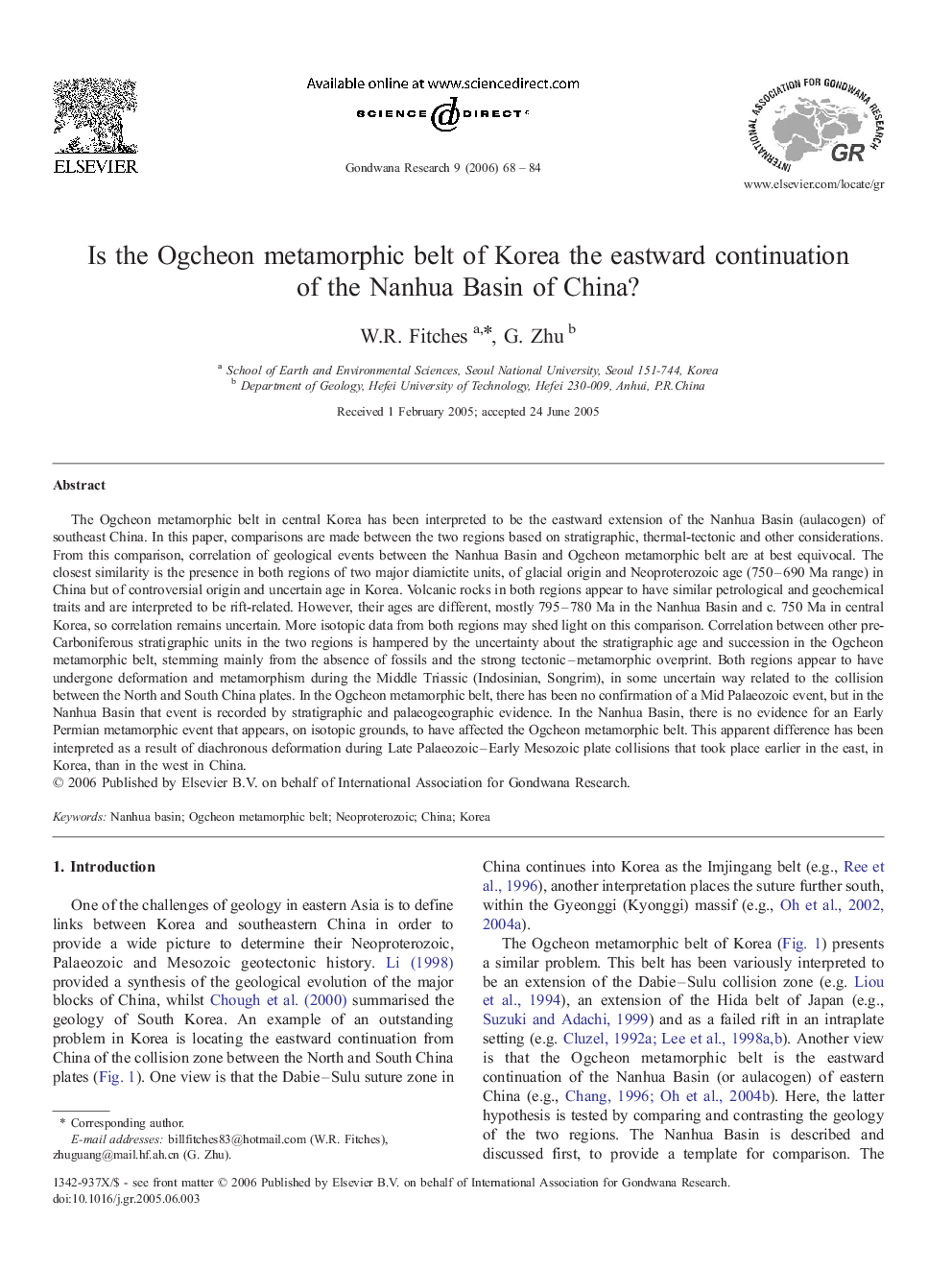| Article ID | Journal | Published Year | Pages | File Type |
|---|---|---|---|---|
| 4728021 | Gondwana Research | 2006 | 17 Pages |
The Ogcheon metamorphic belt in central Korea has been interpreted to be the eastward extension of the Nanhua Basin (aulacogen) of southeast China. In this paper, comparisons are made between the two regions based on stratigraphic, thermal-tectonic and other considerations. From this comparison, correlation of geological events between the Nanhua Basin and Ogcheon metamorphic belt are at best equivocal. The closest similarity is the presence in both regions of two major diamictite units, of glacial origin and Neoproterozoic age (750–690 Ma range) in China but of controversial origin and uncertain age in Korea. Volcanic rocks in both regions appear to have similar petrological and geochemical traits and are interpreted to be rift-related. However, their ages are different, mostly 795–780 Ma in the Nanhua Basin and c. 750 Ma in central Korea, so correlation remains uncertain. More isotopic data from both regions may shed light on this comparison. Correlation between other pre-Carboniferous stratigraphic units in the two regions is hampered by the uncertainty about the stratigraphic age and succession in the Ogcheon metamorphic belt, stemming mainly from the absence of fossils and the strong tectonic–metamorphic overprint. Both regions appear to have undergone deformation and metamorphism during the Middle Triassic (Indosinian, Songrim), in some uncertain way related to the collision between the North and South China plates. In the Ogcheon metamorphic belt, there has been no confirmation of a Mid Palaeozoic event, but in the Nanhua Basin that event is recorded by stratigraphic and palaeogeographic evidence. In the Nanhua Basin, there is no evidence for an Early Permian metamorphic event that appears, on isotopic grounds, to have affected the Ogcheon metamorphic belt. This apparent difference has been interpreted as a result of diachronous deformation during Late Palaeozoic–Early Mesozoic plate collisions that took place earlier in the east, in Korea, than in the west in China.
